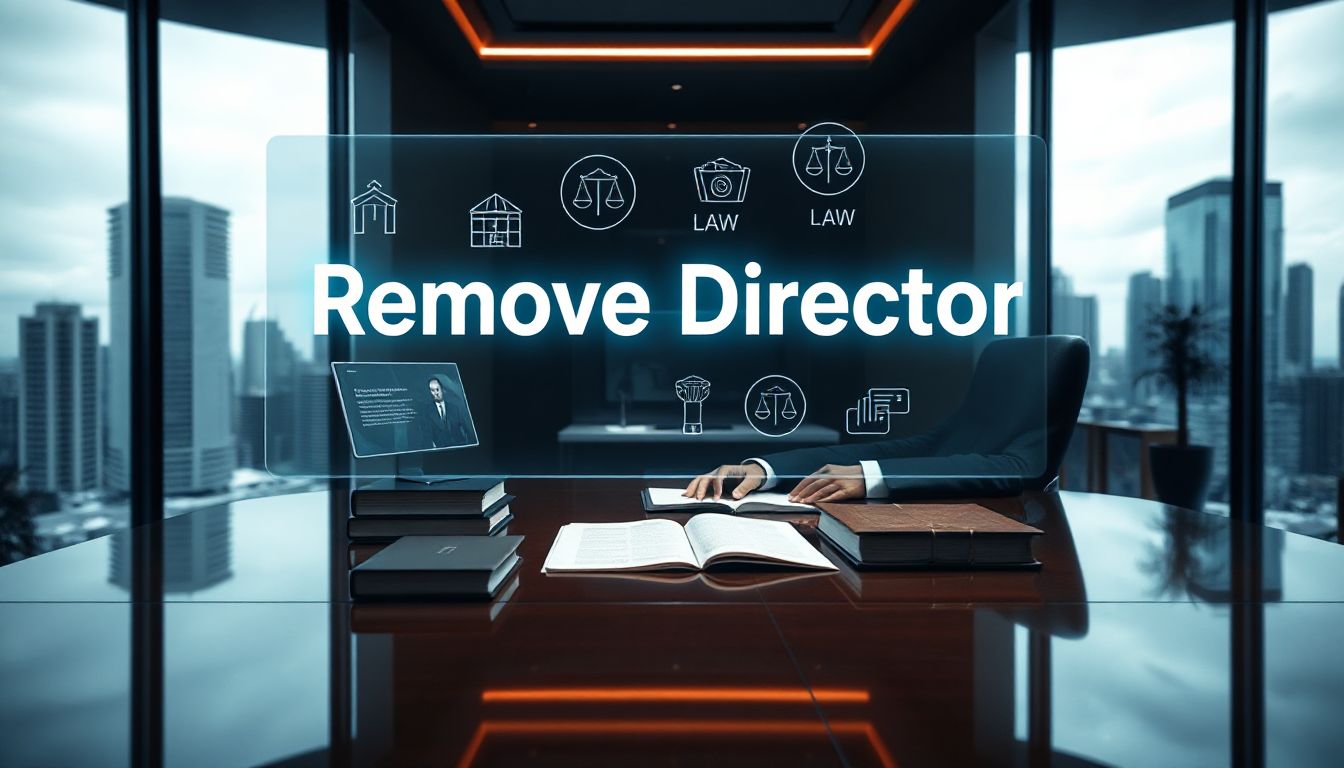What is Remove Director? Full Meaning and Legal Insight
Introduction
Removing a company director might sound simple, but it’s a serious legal process. It’s an essential part of good corporate governance—making sure the right people hold responsible roles. Understanding how and why a director can be removed helps protect a business’s reputation and stability. Whether it’s due to misconduct, poor performance, or other reasons, following the law is key. Many factors come into play, including shareholder rights, company rules, and court procedures. Knowing these helps prevent legal headaches and ensures everyone’s interests are protected.
The Meaning and Definition of Remove Director
Understanding the Term
Removing a director means officially ending their role in the company. It’s different from resignation, which the director chooses willingly. Removal is usually a decision made by shareholders or the board when there are valid reasons. Think of it like replacing a team captain because they aren’t doing their job properly. The company no longer wants them in that position, often due to misconduct or non-performance.
Legal Context and Scope
The rules for removing a director vary based on the company type and location. In public companies, shareholders have more power to remove directors quickly. Private companies might follow their own rules set in their articles of association. Laws in countries like the UK, the US, and India give specific procedures for this process. Generally, statutory laws outline the reasons and steps needed for a lawful removal. This keeps everything clear and fair.
Legal Grounds and Procedures for Removing a Director
Grounds for Removal
Common reasons for removing a director include breaches of duty, misconduct, or failure to perform duties. If a director acts against the company’s interests, misuses resources, or gets involved in illegal acts, removal can be justified. Sometimes, disagreements or conflicts also lead to removal. But legal grounds are needed—removing someone just because you don’t like them isn’t enough. The company's articles of association or bylaws often list acceptable reasons.
Procedure for Removal
Removing a director involves several steps. First, the shareholders usually pass a resolution during a meeting. Here’s how it typically works:
- Notice of Meeting: Shareholders or directors must notify all involved parties.
- Voting: A specific threshold (majority or supermajority) often determines approval.
- Resolution: A formal vote records the removal.
- Legal Filing: The company must update official records to show the change.
The company's articles or bylaws guide this process. In listed companies, the procedures are stricter. For private firms, fewer formalities may be needed. However, laws generally require proper notice and voting rules to be followed.
In some cases, courts get involved—especially if there’s a dispute. Court approval might be necessary if the process were unfair or contested.
Court Intervention and Disputes
Legal challenges happen when a director claims the removal was unjustified. Courts can decide whether the removal was lawful or not. For example, a director might argue that they were dismissed without following proper procedures. Courts then review the case and decide if the removal stands or if the company has to reinstate the director.
Legal Implications and Consequences of Director Removal
Impact on the Company
Removing a director can affect company management and reputation. It might signal internal disagreements or trouble, which stakeholders notice. Also, the company must update legal records and inform authorities.
For the removed director, there are protections too. They may be entitled to compensation or severance, especially if their removal breaches employment or contractual agreements.
Impact on Stakeholders
Shareholders, especially minorities, often have rights in the removal process. They can influence governance and ensure they aren’t pushed aside unfairly. Creditors also look at director changes, as they can impact the company’s financial health. Proper legal steps help reduce risks and maintain stakeholder trust.
Statutory and Contractual Obligations
After removal, directors still hold certain obligations. Fiduciary duties don’t vanish immediately. Removed directors might still be responsible for certain liabilities if they occurred before their departure. Confidentiality and non-compete clauses often remain in effect, preventing them from sharing sensitive information or working for competitors.
Real-World Examples of Director Removal Cases
One notable case involved a public company where a director was removed for violating internal policies. The company followed legal procedures, and the court confirmed the removal was justified. The incident caused a market dip but showed the importance of proper governance.
In another instance, a private firm removed a director after allegations of misconduct. The court pushed for transparent proceedings, leading to the director receiving some benefits and a clear legal process, which minimized disputes.
These stories highlight that following the rules keeps companies stable and builds trust among stakeholders.
Expert Insights and Legal Tips
Legal experts advise companies to have clear policies on removing directors from the start. Drafting well-organized governance rules can prevent disputes later. Maintaining transparency during the process is key—say, explaining why the removal happens helps everyone accept the decision.
It’s best to consult with legal professionals before initiating a removal. They can ensure your actions follow local laws and company rules. Avoid surprising directors or shareholders with sudden moves. Being fair and transparent helps keep your reputation intact.
Conclusion
Removing a director is a serious legal step that requires careful planning and adherence to laws. It’s more than just voting; it involves proper procedures, valid reasons, and legal filings. Proper removal safeguards your company, protects stakeholders, and helps maintain trust. Always follow legal procedures to prevent disputes and legal challenges. Remember, transparency and fairness are your best tools when removing a director. Stay informed, act legally, and your company will be stronger and more resilient in facing governance challenges.
